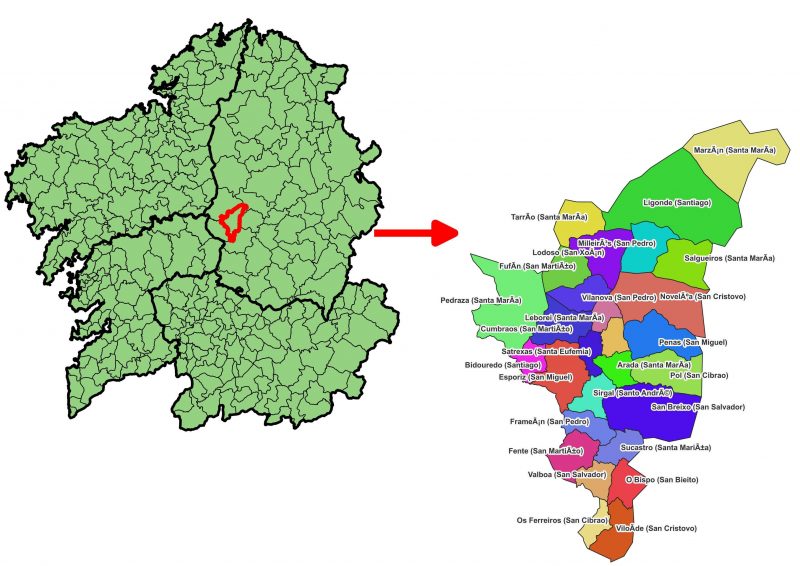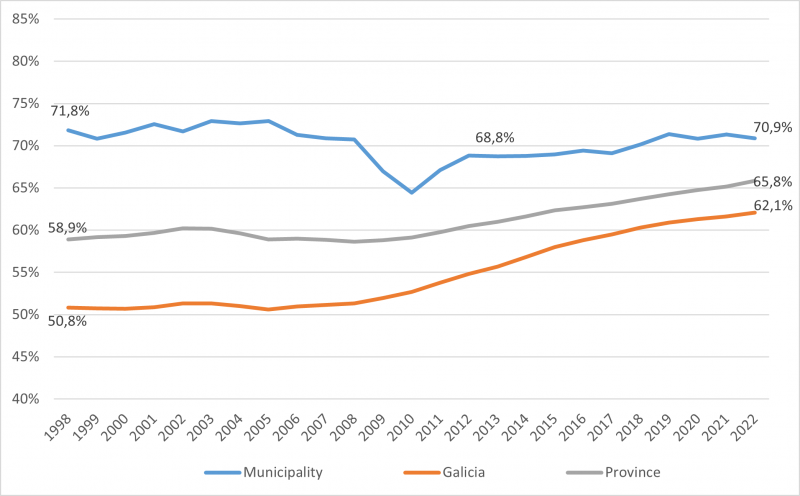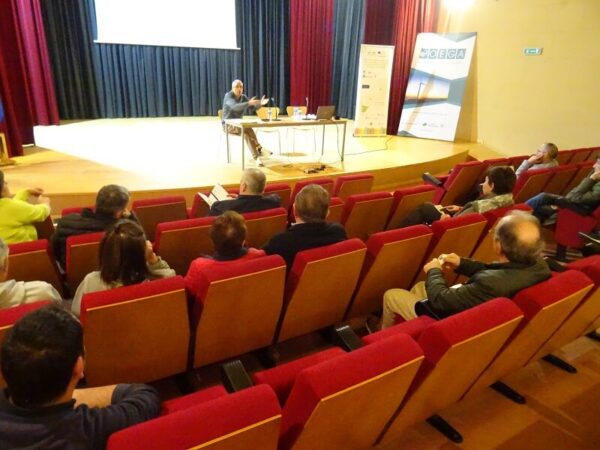
Introduction
The Municipality of Monterroso is located in the region of Ulloa, in the southwest of the province of Lugo, close to the border with Pontevedra and some 50 kilometres from the provincial capital. It is an inland territory, with approximately 3,600 inhabitants in 2022, with a surface area of 114.59 square kilometres, presenting a degree of urbanisation in a sparsely populated area, according to the Galician Institute of Statistics.
It is part of the Miño Ulla Rural Development Group (RDG5).

Population and demographic structure
The population of Monterroso suffered a continuous loss of inhabitants in the period from 1991 to 2022, practically reaching 1,000 inhabitants, which represents a decrease of close to -22%, with an average fall of 32 inhabitants per year.
In the period 2012-2022, Monterroso showed a strong demographic contraction, with -9.67%, which coincides with the fall experienced both in Galicia, with -3.27%, and especially in the province, with -7.14%. This negative behaviour reveals a trend towards overall population loss, as well as a territorial demographic imbalance with a more pronounced demographic decline in rural areas.
The unfavourable demographic progress is accompanied by a transition in age distribution, which has led to an ageing population. Between 2012 and 2022 there was a fall in the number of inhabitants under 16 years of age, which implied a drop in this group of more than -17 percentage points. The 15-64 age group fell by -10.8% and the population aged 64 and over fell by -5.2%.
This process of demographic ageing is reflected in the narrowing of the base of the population pyramid and the increase in the average age. The average age of the inhabitants in 2022 reached 51.4 years. The average age of women is slightly higher than that of men, at 52.9 years for women and 49.8 years for men.
The General Dependency Ratio (GDR) in Monterroso increased to 70.9% in 2022, after continuing to grow since 2010. It is worth highlighting the distance of this municipal indicator with respect to its corresponding provincial indicator, with 66%, and the regional indicator, with 62%, although the former and the latter have been getting closer since 2012.

Population dynamics in Monterroso.

Evolution of the total dependency ratio of Monterroso, Lugo and Galicia.
Economy
The evolution of Gross Disposable Product (GDP) up to 2018 followed the same growth trend as the Galician municipalities as a whole and the province of Lugo. After an initial decline between 2010 and 2012, growth rates were positive, distancing itself from what happened in Galicia and Lugo, where growth was more positive than that of the municipality in 2018. In 2020, the growth of the locality was 7.5% and contrasted with the fall observed both in Galicia as a whole, with -7.7%, and in the province, with -7.2%.
In 2022, Monterroso’s real GDP per inhabitant will be 21,743 euros, thus far exceeding the corresponding indicators for Lugo and Galicia.
The Gross Disposable Income (GDI) showed a growth trend which was quite parallel to that of Galicia and the province as a whole, although its level remained lower. Moreover, the intensity of the variations was greater in the locality than in the territorial aggregates. Specifically, the increased between 2002 and 2019, before the pandemic, was approximately 24.5% in Monterroso. This remarkable growth led to a narrowing of the gap between the average household income in Galicia, Lugo and Monterroso, reaching 14,260 euros per inhabitant of the municipality in 2019, some 2,500 euros below the Galician average and 1,500 below the provincial average.
Using Social Security affiliation as an estimate of municipal employment, between 2011 and 2022, Monterroso grew by 5.72%, although at a slightly lower rate than that registered in Galicia, with 7.8%, but higher than that of the province of Lugo, with 0.56%. Analysis by sector showed that the primary sector increased by 3.57% with 20% of the total number of affiliations, as well as the tertiary sector with an increase of 10.6%, accounting for 63% of affiliations. The secondary sector loses around -3.4% of affiliations and concentrates 17.13% of affiliations.
In 2022, Monterroso had an activity rate of 70.9%, above the rates for the whole of Galicia and Lugo. The employment rate was 63%, exceeding the provincial and regional rate of 47%. The unemployment rate decreased from 15.1% in 2011 to 10.9% in 2022. The number of unemployed experienced a notable decrease, falling by 27.6%, while the number of employed increased modestly, rising by 5.4% between 2011 and 2022.
The evolution of the number of active, employed, and unemployed people in the municipality of Monterroso shows slight variations in the figures corresponding to the active population during the period 2011 to 2022, which remain practically constant at around 1,500 people.

Evolution of Gross Disposable Income per inhabitant in Monterros, Lugo and Galicia.

Evolution of employment, unemployment, and activity rates in the municipality of Monterroso.
Energy resources
Monterroso has had two electricity production facilities using photovoltaic technology since September 2008. They accumulate 103.5 kW of installed power, which is distributed between them as follows: 96 and 7.5 kW. In the same line, it also counts two photovoltaic installations, to which it attributes a total installed power of 0.104 MW (104 KW).
The electricity consumption of Monterroso in 2023 was estimated at 9,776.40 MWh. Residential consumption was 5,377.85 MWh. The consumption of services, including municipal services, was 3,399.40 MWh. Industry consumed 999.16 MWh.
Energy Policy Councils
Date of the first meeting:
29th April 2024
Number of participants:
15 people
Profile of participants:
- Staff of the municipality of Monterroso: deputy mayor
- EC4RURAL project staff: UVIGO, ESPAZOCOOP
- Citizens
Evaluation of the energy situation
Monterroso has two electricity production facilities using photovoltaic technology. These two installations accumulate 103.5 kW of installed power, which are distributed between them as follows: 96 and 7.5 kW.
At the meeting, the Deputy Mayor presented the interest of being part of the EC4RURAL project.
Dialogue between the parties
During the meeting, there was an open dialogue between the citizens and the municipality about photovoltaic energy production. The spatio-temporal distribution of the photovoltaic (PV) panels, the model of PV energy production with surplus energy, the advantages and challenges of promoting an energy community and the governance and management model of the community were discussed.
Conclusions
It is worth mentioning that there were difficulties in moving the community initiative forward. This was due to motivational difficulties expressed by local representatives. As a result, the Energy Policy Council was not established.



